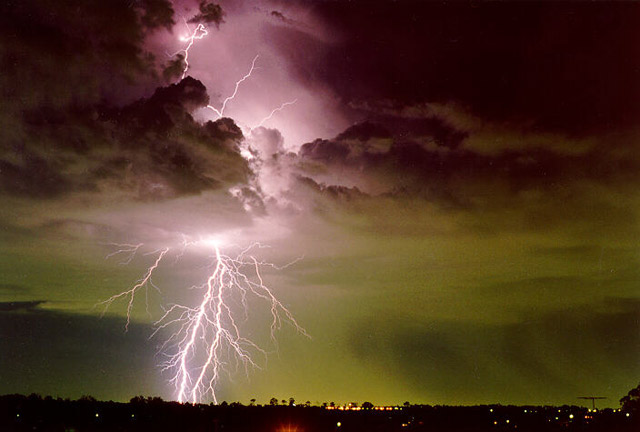A team of Australian scientists has proposed a new mathematical theory to explain the mysterious phenomenon known as ball lightning.

© University of MinnesotaLightning in Australia.
Sightings of ball lightning have been made for centuries around the world - usually about 10 cm in diameter and lasting up to twenty seconds - but no explanation of how it occurs has been universally accepted by science.
Previous competing theories have cited microwave radiation from thunderclouds, oxidizing aerosols, nuclear energy, dark matter, antimatter, and even black holes as possible causes.
The new theory, reported in a paper in the Journal of Geophysical Research Atmospheres, focuses on how ball lightning occurs in houses and aeroplanes - and how it can pass through glass. The theory also proposes that ball lightning is caused when leftover ions - electric energy, which are very dense, are swept to the ground following a lightning strike.
"A crucial proof of any theory of ball lightning would be if the theory could be used to make ball lightning. This is the first paper which gives a mathematical solution explaining the birth or initiation of ball lighting," explained Dr John Lowke, scientist with the CSIRO's Materials Science and Engineering.
The theory proposes that ball lightning occurs in houses and aeroplanes when a stream of ions accumulates on the outside of a glass window and the resulting electric field on the other side excites air molecules to form a ball discharge. The discharge requires a driving electric field of about a million volts.
"Other theories have suggested ball lightning is created by slowly burning particles of silicon formed in a lightning strike, but this is flawed. One of the ball lightning observations cited in this paper occurred when there was no thunderstorm and was driven by ions from the aircraft radar operated at maximum power during a dense fog," the scientist said.
The team used eye-witness accounts of ball lightning by two former US Air Force pilots to verify the theory. Former US Air Force lieutenant Don Smith recalls: "After flying for about 15 minutes, there developed on the randome (radar cover) two horns of Saint Elmo's fire. It looked as if the airplane now had bull's horns, they were glowing with the blue of electricity."
The new theory gives the first mathematical solution explaining the birth or initiation of ball lightning using standard equations for the motion of electrons and ions.

St.Elmo's Fire ISN"T Ball Lightning.
St.Elmo's Fire? Accumulation of static - and eventually potentiall current - electricity on an object. ( E.g., Read Moby Dick, re the ship's masts.)
Ball Lighting floats around in and out of places, but not usually throug matter. (E.g., it goes down the stairs, out the door.) Read "Unexplained Phenomenna" or the original, Fort's Book of the Damned. Latter free online.)
R.C.